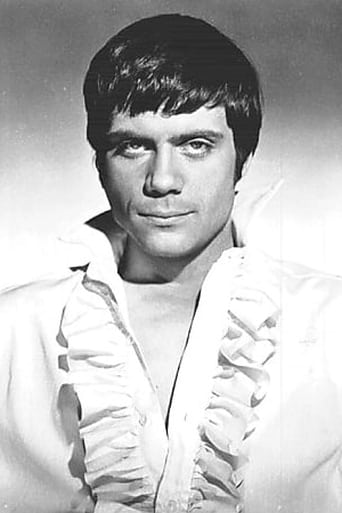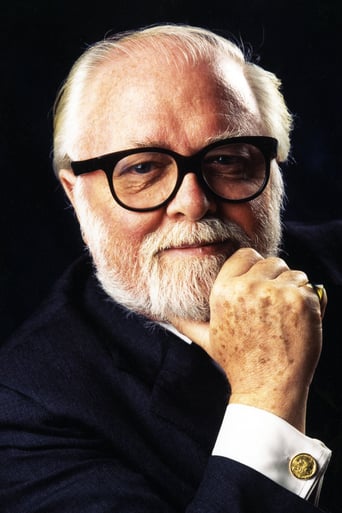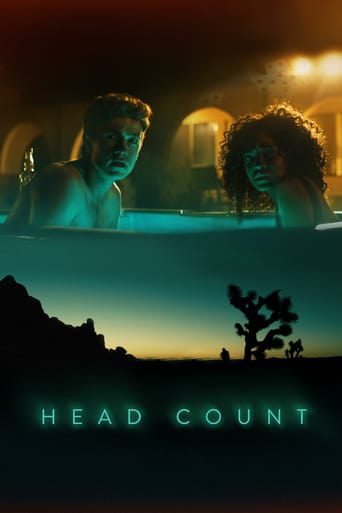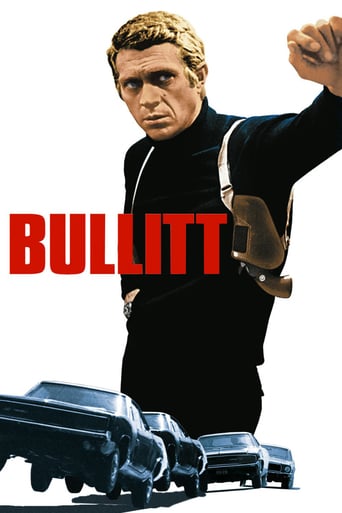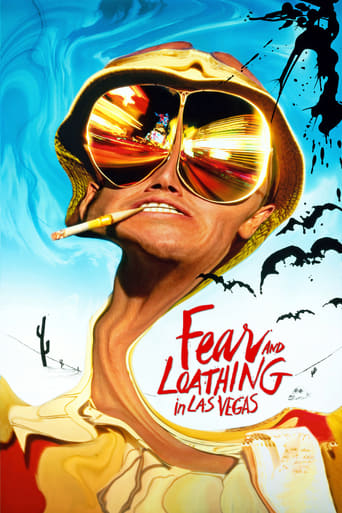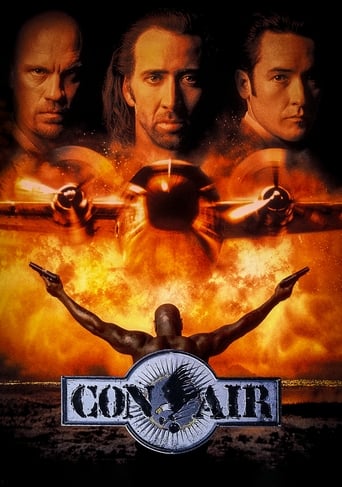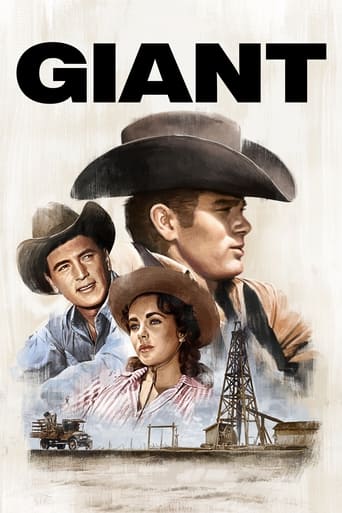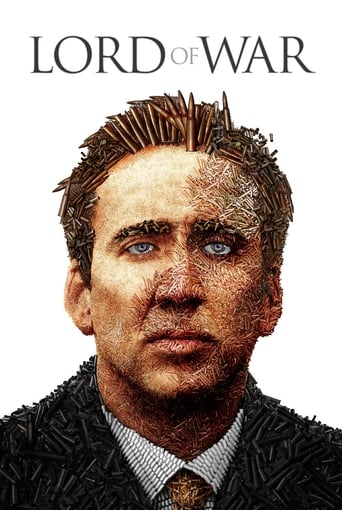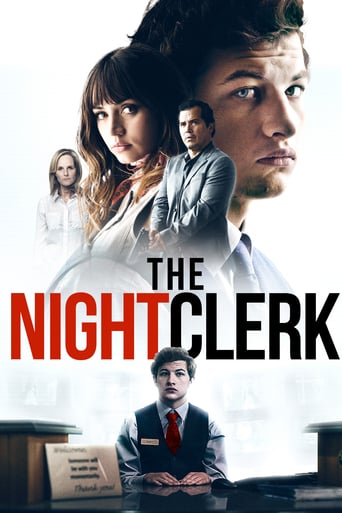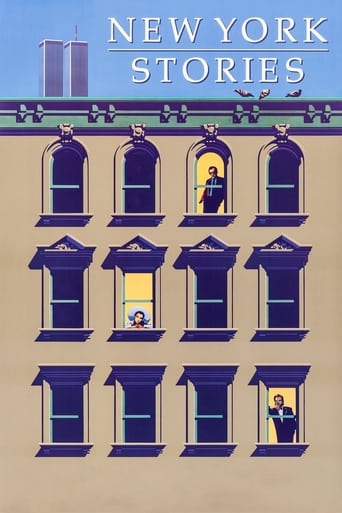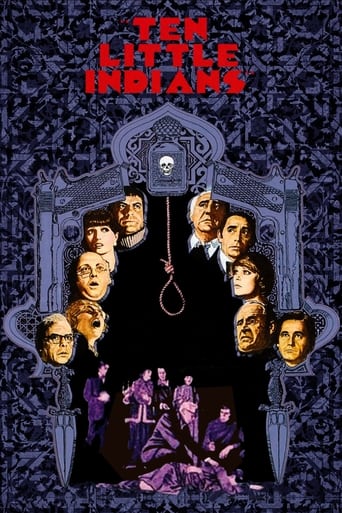

And Then There Were None (1974)
Ten people are invited to a hotel in the Iranian desert, only to find that an unseen person is killing them one by one. Could one of them be the killer?
Watch Trailer
Cast


Similar titles
Reviews
How sad is this?
A Masterpiece!
The film creates a perfect balance between action and depth of basic needs, in the midst of an infertile atmosphere.
A great movie, one of the best of this year. There was a bit of confusion at one point in the plot, but nothing serious.
Third film version of Agatha Christie's mystery whodunit (following 1945's "And Then There Were None" and 1965's "Ten Little Indians") has a seemingly disparate group of people flown out to an ornate but empty hotel in the Iranian desert by an unknown benefactor. Once settled in, the group learns they do have something in common: at one time in their lives, each was responsible for the death of another person--and none of them paid the price for their crimes. Not badly made or cast, just deadly dull; even the curious new location isn't used to any advantage. Peter Collinson directs without invention or energy. Script by Erich Kröhnke, Enrique Llovet and Peter Welbeck (a pseudonym for Harry Alan Towers, who also produced) is awfully similar to the screenplay for the 1965 version, coincidentally also co-written and produced by Towers. NO STARS from ****
Ten Little Indians (AKA: And Then There Were None) is directed by Peter Collinson and adapted to screenplay by Peter Wellbeck (AKA: Harry Alan Towers) from the Agatha Christie novel. It stars Charles Aznavour, Stephane Audran, Elke Sommer, Gert Frobe, Herbert Lom, Oliver Reed and Richard Attenborough. Music is by Bruno Nicolai and cinematography by Fernando Arribas.Agatha Christie's famous novel gets another make-over, this time the action is located at a near empty hotel in the Iranian desert. Premise is exactly the same as the 1965 version, 10 people gather at the location on the request of the mysterious U.N. Owen (here voiced by Orson Welles), who via a tape recorded message calls them out for dastardly deeds committed in their respective lives. When they start being killed off one by one it becomes apparent that the price they have to pay for said crimes is death. But who is doing the killing?Well it's the first version in colour and it has what can only be described as a pretty formidable cast, yet it's as bland as bland can be. Especially if you have seen the superior 45 and 65 versions. The murders lack vitality, the cast go through the motions, seemingly just happy to be on location in Iran, while suspense is in very short supply. The only mystery is who is doing the killings? And once revealed at pic's finale it just isn't enough to warrant having sat through over an hour and half of mundane scripting and zero chills. 4/10
This is the third time the Agatha Christie classic "Ten Little Indians" has been brought to the big screen (after 1945 and 1965) and I must say with regret that this is certainly the weakest one. The story is the same as it's always been: 10 strangers are invited by a mysterious stranger to a secluded hotel. This time its set in the Iranian desert of all places (this film was made before the fall of the Shah) however this unique geographical location is under exploited. The cast is a mix of Oliver Reed, Richard Attenborough, two ex-Bond villains Largo and Goldfinger. The rest I must admit were unknown to me. As said before: the story is very much the same as before, absolutely nothing is added to the story, the atmosphere or execution. In fact I'd say that the film is rather quiet with the dialogue lacking in content. The characters seem almost detached from the mystery unravelling around them, it doesn't seem to interest them. They put very little effort into discussing or trying to resolve the mystery. Somebody gets killed and the characters seem to forget about it almost instantaneously. The film really fails to get you into that good "whudunit" feeling where you're wondering what happens next or how what just happened may have occurred. Its very underwhelming. The direction isn't very successful either. The location isn't exploited quite as well as could have been to give you a sense of isolation and hopelessness. The soundtrack decisions are frankly bizarre with the background music often ruining the atmosphere. Overall a disappointing effort, watch the 1945 or 1965 versions instead.
Director Peter Collinson was on the receiving end of frequent critical maulings for his films. Many of these maulings were quite undeserved, but his version of the famous Agatha Christie story And Then There Were None is an absolute stinker, and totally warrants the scathing reviews that have been written about it. It is the third cinematic stab at the story and easily the weakest of the lot, a flatly directed mess in which fine actors give uncharacteristically poor performances. On those rare occasions that a moment of tension does threaten to burst through, it is ruined either by Collinson's heavy-handed touches of gimmickry or the woefully unsuitable music (scored by Bruno Nicolai).Ten complete strangers are summoned to an isolated hotel in the middle of the Persian desert. They do not know each other at all, and they do not know their host. It gradually becomes apparent that each person has been lured to the hotel because they have a dark secret in their past. Someone has threatened to expose their dirty laundry unless they put in an appearance at the hotel. The number includes Hugh Lombard (Oliver Reed), Judge Cannon (Richard Attenborough), Wilhelm Blore (Gert Frobe), Vera Clyde (Elke Sommer) and Dr Armstrong (Herbert Lom), among others. Upon their arrival, an eerie tape recorded voice (supplied by Orson Welles) greets them to what is, in effect, a remote prison. Too late they realise they have been assembled as part of a cunning revenge plot as, one by one, the guests are murdered by an unknown killer. Trapped hundreds of miles from civilisation at the mercy of an unseen assailant, the survivors must figure out why they are being slain, how to escape, and which member of their number is responsible .The 1945 version of the story, directed by Rene Clair, is by far the best, with its creepy atmosphere and effective island locale. The 1966 remake from George Pollock relocates events to the Austrian Alps and, while competently made, is little more than passable. This 1974 addition again switches the locale (the decision to use a grand hotel in the middle of the Persian desert is pointless) but it is considerably poorer than the earlier versions in every department. On paper, the cast looks like the strongest ever assembled for this particular story but they fail unanimously to enliven their underwritten roles. The pacing is leaden; the supposedly tense predicament of the characters never engrosses; the general air throughout is one of indifference. There is a strong case to argue that this might be the worst ever adaptation of any Agatha Christie novel.On a note of trivia, a fourth version emerged in 1989, with a jungle setting it is a pretty bad film, but not as bad as this one.


